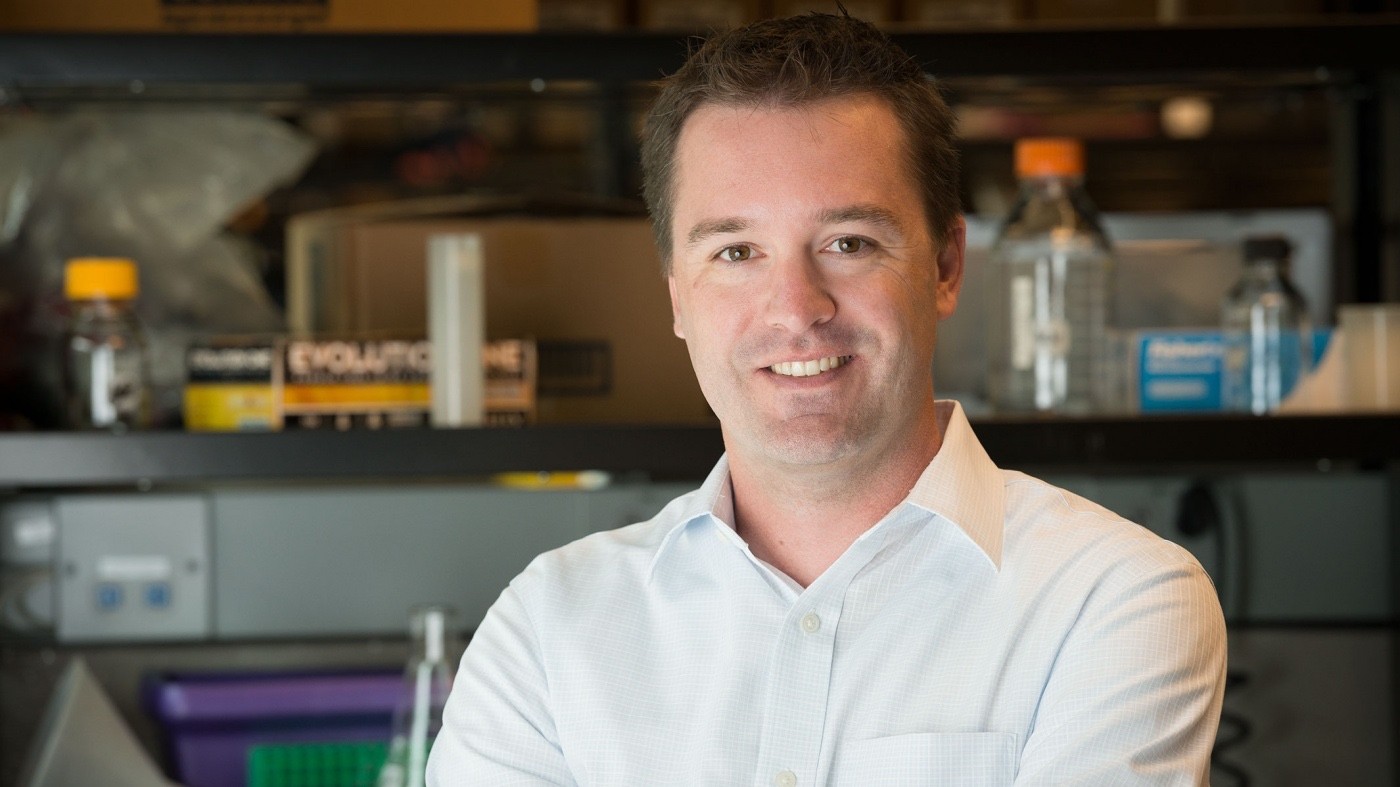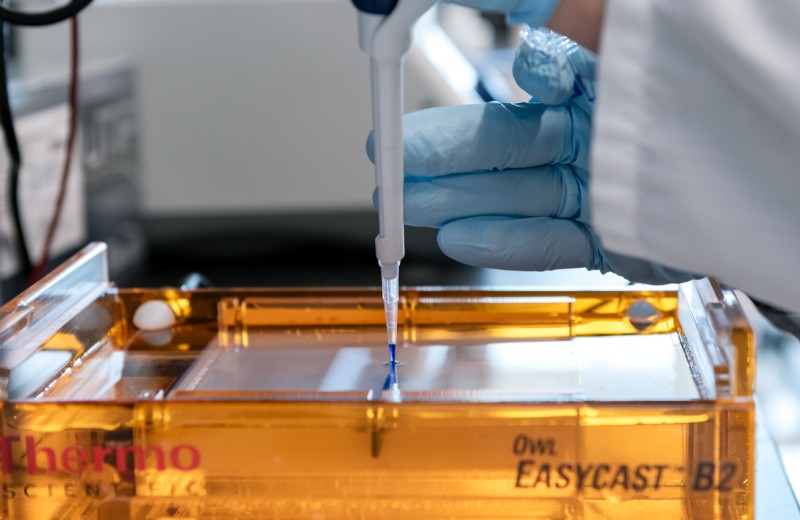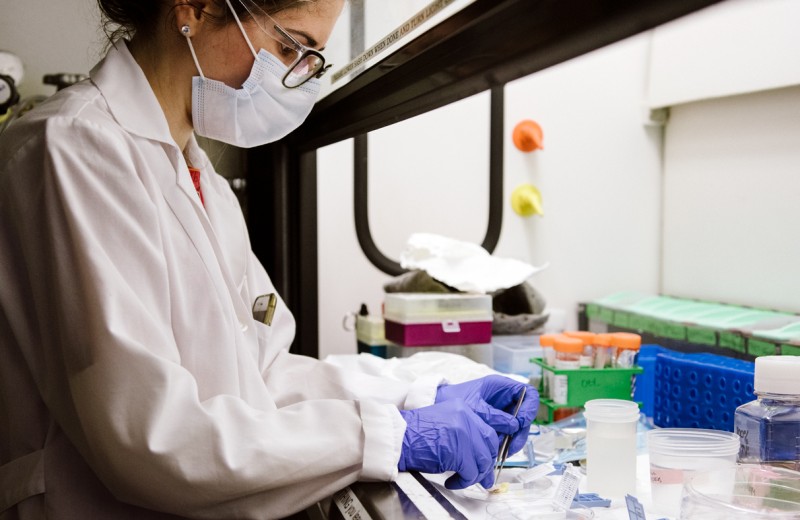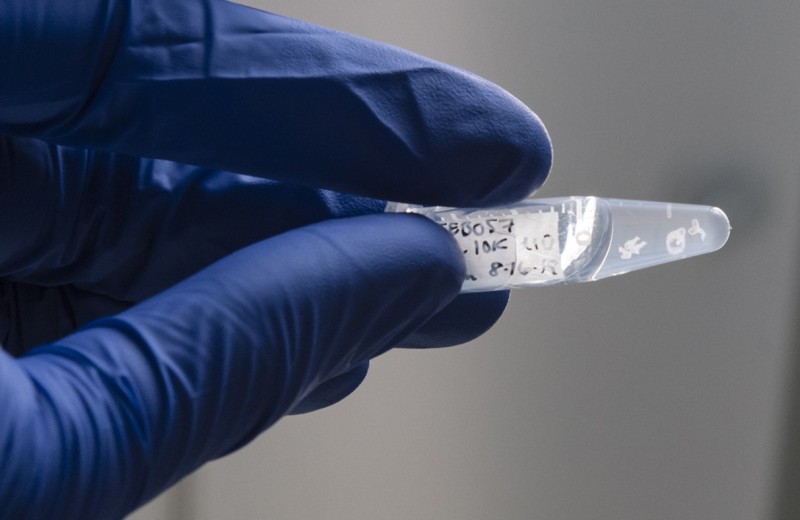Gladstone NOW: The Campaign Join Us on the Journey✕

Todd McDevitt, PhD, and his laboratory have rapidly enhanced how Gladstone thinks about bioengineering and stem cell biology. [Photo: Chris Goodfellow, Gladstone Institutes]
This year marks the first anniversary since Todd McDevitt, PhD, arrived at the Gladstone Institutes. His move was prompted after he received a California Institute for Regenerative Medicine (CIRM) Research Leadership Award to move his laboratory from the Georgia Institute of Technology to Gladstone.
McDevitt, a senior investigator at Gladstone, received the award to fund his efforts to use human pluripotent stem cells to engineer microscale tissue constructs. These constructs simulate three-dimensional models of organs and could be used to discover and develop new drugs, model diseases, and, ultimately, directly repair, restore, and replace organs damaged by injury or disease—all vital aspects of regenerative medicine.
“To use stem cells for regenerative medicine, we must create constructs that resemble the structure and physiological functions of real tissues in the body,” said McDevitt. “We are working to create cardiac and neural tissues from human stem cells that will advance research of diseases that affect these tissues and could be used to more directly improve human health.”
McDevitt is a leading biomedical engineer with invaluable experience engineering tissues. By joining Gladstone, he strategically placed himself in a pool of cutting-edge cardiovascular and neural scientists with whom he could form new collaborations.
“Gladstone offers unique scientific expertise that spans several research areas that complement my own work,” shared McDevitt. “By forging new collaborations with these leading scientists, and other researchers in the Bay Area, we are working together toward the common goal of overcoming disease.”
CIRM recently interviewed McDevitt about his first year at Gladstone. During the interview, he discussed his research, how he came to Gladstone, and why bioengineering is important for stem cell research.
“I think that bioengineering approaches provide novel opportunities to overcome some of the major hurdles facing the field of stem cell research,” explained McDevitt.
Since joining Gladstone, McDevitt’s lab has created a new method to generate three-dimensional clusters of specific types of cells that can be used to form and maintain tissue constructs.
“We take human stem cells and differentiate them into cardiomyocytes and build 3D tissues out of them,” said Tracy Hookway, a postdoctoral scholar in McDevitt’s laboratory. “We can use these cells and tissues as cell-based therapies and screening platforms, as well as to learn about heart development.”
McDevitt’s lab also studies how biomaterials can more effectively control the way stem cells develop into other cells in the body. His work has made important contributions to this field and has had an immediate impact at Gladstone.
“Todd has been a fantastic addition to our research community,” said Deepak Srivastava, MD, director of cardiovascular research at Gladstone. “He has really changed and enhanced how we think about engineering and biology.”
Support from the California Institute for Regenerative Medicine was integral in bringing the McDevitt lab to Gladstone one year ago. [Video: Todd Dubnicoff and Karen Ring]
Support Discovery Science
Your gift to Gladstone will allow our researchers to pursue high-quality science, focus on disease, and train the next generation of scientific thought leaders.
Mini-Livers on a Chip
Mini-Livers on a Chip
A new platform designed by Gladstone scientists for studying how the immune system responds to hepatitis C virus could speed the hunt for a vaccine
News Release Research (Publication) Hepatitis C Infectious Disease McDevitt Lab Ott Lab OrganoidsIt Takes Guts to Make a Heart
It Takes Guts to Make a Heart
Gladstone scientists create novel organoids that open new doors for understanding crosstalk between tissues during human development
News Release Research (Publication) Cardiovascular Disease McDevitt Lab OrganoidsHow Do Developing Spinal Cords Choose “Heads” or “Tails”?
How Do Developing Spinal Cords Choose “Heads” or “Tails”?
A new human organoid developed by Gladstone scientists mimics one of the key steps in early embryonic development
News Release Research (Publication) Cardiovascular Disease McDevitt Lab CRISPR/Gene Editing Stem Cells/iPSCs



